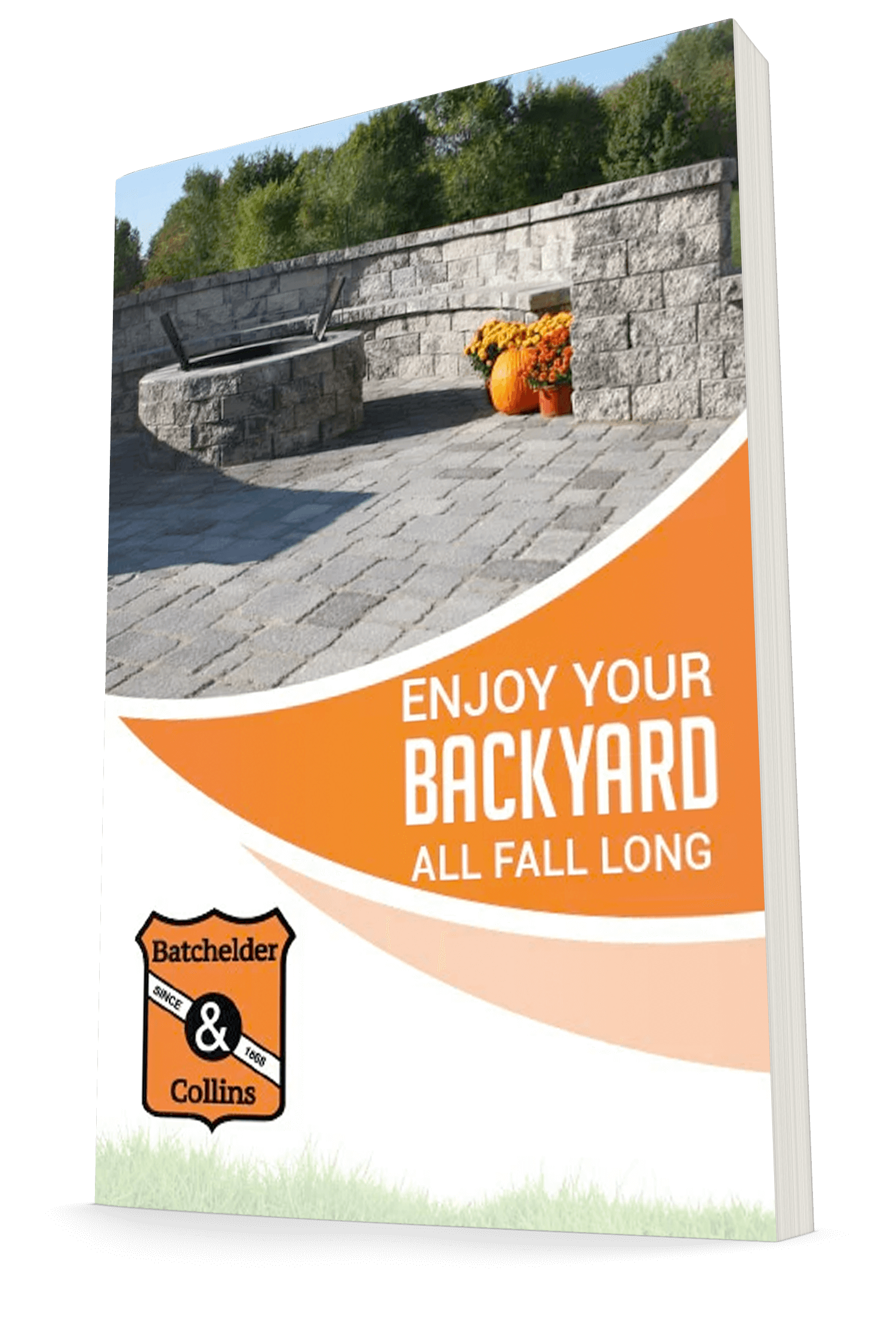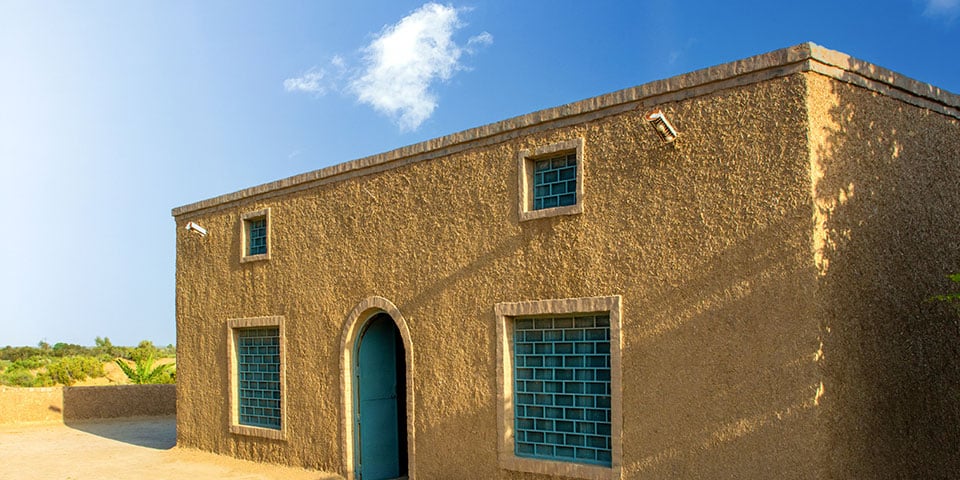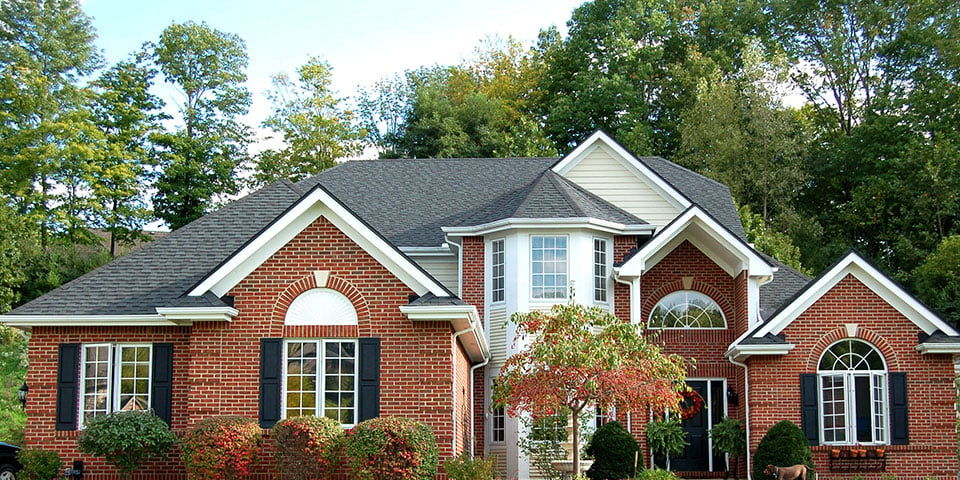Brick Masonry History
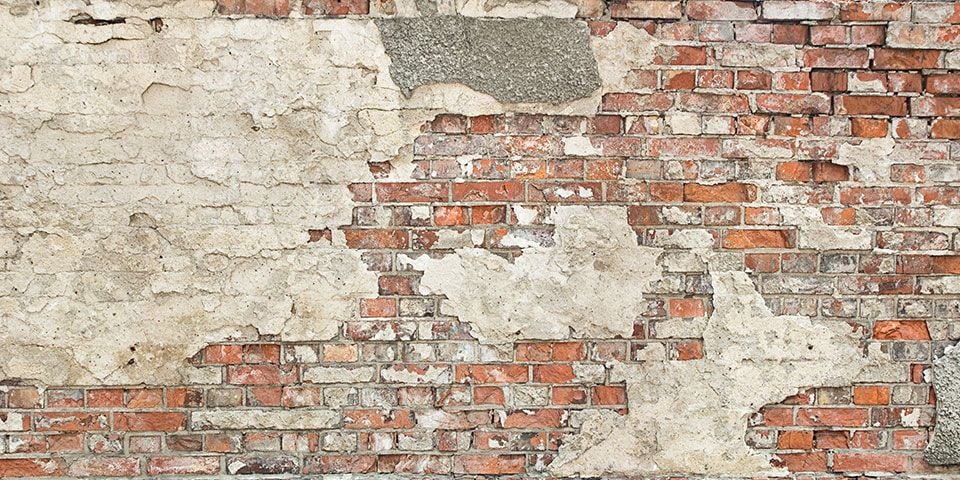
You encounter bricks every single day. They are everywhere, from brick houses and brick buildings to paved walkways and even some streets. You pass by them all the time and never give them a second thought. Bricks are a popular building material both for sturdiness and decorative value. Have you ever wondered when we first started using bricks and why?
Bricks have a long legacy going back more than 10,000 years. Check out some interesting facts and trivia about the history of bricks and brickmaking and learn why you should choose Batchelder & Collins bricks in your own home construction and remodeling projects.
How Old Is the Oldest Brick?
The earliest bricks discovered date to around 7,000 BCE and were found in what is now modern-day southern Turkey near the ancient Biblical city of Jericho. The first bricks were mud bricks, meaning they were most likely made from mud clay mixed with straw, shaped by hand, and sundried in the open air.
While these are the oldest bricks discovered, the history of brickmaking may go back even earlier. Ancient writings indicate that the ancient Egyptians, Romans, and other early cultures used bricks, with sun-dried bricks being some of the earliest forms.
Turkey and the Middle East
Besides Turkey, bricks dating from 7000 to 3500 BCE have been discovered across the Middle East, particularly in the Tigris region, the Persian Gulf, Pakistan, and South Asia. These were universally air-dried mudbricks.
China
Bricks in China date back to at least 4400 BCE. They were discovered in the Chengtoushan region, and rather than the air-dried bricks from the Middle East, this type of brick was baked in a brick kiln at over 1,100 degrees Fahrenheit. These early examples of fired bricks were more commonly used as flooring than as a building material.
Europe
During the middle ages, workers kneaded clay by hand, placed it in wooden molds, and wiped away the clay. The molds were left to dry, and the bricks were pulled from the frame. This handmade form of brickmaking with molds lasted until the late 19th century.
By the 11th and 12th centuries, Europeans rediscovered the art of bricklaying and commonly erected brick structures. These structures began in Rome and spread to other countries, including England, France, and Germany. By the Renaissance, brick buildings were common throughout Europe. Many significant Renaissance structures, like brick gothic cathedrals, arose.
During the Industrial Revolution era of Great Britain in the 1760s, brick manufacturing used red clay, whose color came from iron oxide within the dirt. These raw materials produced the bright red bricks so familiar today. This made bricks aesthetically preferable to stone as a building material, as buildings made from red bricks were easier to see in the dense fog, thus aiding travelers in inclement weather conditions.
By the early-mid 20th century, brickmaking took a quantum leap forward. New brick-making machines enabled the mass production of bricks, making brick structures easier to produce. Today in places like Poland and the Netherlands, brick homes are wildly popular, and Dutch brick is its own architectural style.
North America
Native Americans in the Southwest used clay, mud, and straw to create clay bricks called adobe, which translates to mudbrick. These clay logs would be sun-dried and then stacked to build brick walls. Adobe brick buildings do not resemble the brick homes of today because the Native Americans, after stacking their building blocks, did not use mortar to fill gaps but covered the walls with additional mud, so the walls looked smooth. These structures probably looked similar to their contemporary Turkish designs.
Fired bricks as we know them today, made from molds and baked in kilns, probably came to the United States around the 1600s with English colonists. We know that brick buildings in the United States went up around 1611, but the building boom of the 19th century made brick the dominant building material it is today.
Boston is famed for its iconic and historic brick rowhouses and brownstones. Even some of the world’s most famed skyscrapers used brickwork. In fact, New York’s Empire State Building is comprised of 10 million clay bricks.
Types of Bricks Used Throughout History
Types of bricks are classified mainly by the brickmaking process as opposed to the raw materials used, though raw materials are used in conjunction with the creation process to rate the quality of bricks from First to Fourth Class. Modern bricks use various materials, from clay to fly ash to silicates. Brickmaking processes have changed and evolved through history, primarily to produce stronger, more efficient bricks.
Sun-Dried Brick
Sun-dried bricks are also called unfired bricks or mudbricks. They are the earliest forms of bricks and were made where climates were hot and dry enough to “cook” the brick naturally once it was formed. These types of bricks only thrive in arid environments as exposure to water will rapidly deteriorate them. Before the invention of wooden molds, they would have been formed by hand.
Fired Brick
Fired brick, also called fire brick, is generally made from sand, iron oxide, clay, lime, and magnesia. It is among the longest-lasting forms of brick. The Romans pioneered mobile kilns, which allowed remote worksites to arise and make bricks viable for creating everything from public works projects to remote military fortifications.
Molded Brick
Molded brick initially used wooden forms called molds or moulds, which were filled by hand and packed. These later gave way during the Industrial Revolution to steel molds that used hydraulic presses to create extra-strong bricks that could be fired at up to 1,832 degrees Fahrenheit.
Pressed Brick
Pressed brick, or dry-pressed brick, uses thicker materials, allowing for very sharp edges when the brick is pressed and shaped. These types of bricks are prized for their aesthetic value and regular appearance.
What are the Different Processes for Brick Making?
Many different processes exist for brickmaking. The three most common in the modern era are molding, extruding, and dry pressing.
Molding
Originally, molding was done by hand as clay and mud were poured into a wooden mold, then the excess materials were removed. When the brick dried, it was removed from the mold, and another was made. Today, brick molding is done via mass production using high pressure, high heat, and steel molds to create bricks of exceptional strength and durability.
Extruding
Brickmakers produce extruded bricks by forcing clay through a die. This forms holes and makes wire-cut faces. The result is a lighter-weight brick that is less expensive to use than a dry-pressed brick and easier to finish with cement renders and other facing materials.
Dry-Pressing
Dry-pressing is like molding but uses a thicker clay mix to create highly accurate and regular-shaped bricks. Since dry-pressing uses a greater force and the burn time takes longer, making dry-pressed bricks is much more expensive than other methods. Clay is dried in a drum-drier, crushed, and ground to powder, then placed into a toggle press where the pressure forms it into a finished brick.
Brick Building in Ancient Times
As discussed earlier, hand-formed bricks saw use in the ancient Middle East, Egypt, and even as far west as the adobe structures of ancient North American civilizations. Europeans used bricks as far back as the Roman Empire. The Romans used fired bricks to build everything from arches and cultural centers to vaults and forts.
Romans also pioneered the use of mobile kilns, allowing them to spread brickmaking worldwide. Even today, the remains of ancient Roman forts built with fired brick can be found as far off as France, England, and Ireland. It is a testimony to the sturdiness and utility of bricks as a building material.
Unfortunately, when the Roman Empire fell, the production of brick went with it and retreated to the Byzantine Empire and Italy until it was rediscovered around the 12th century. After that, it spread once more throughout the civilized world and rapidly became a dominant building material in everything from houses to gothic brick cathedrals. The first brick-making machines arrived on the scene in the 1800s, making mass production of bricks viable.
The Industrialization Period’s Impact on Brick Production
When brick-making machines were invented during the Industrial Revolution, brick production changed fundamentally. Brickmaking was now faster and more efficient than ever. This made bricks less expensive to produce, increasing their popularity.
The discovery of red clay bricks was another marked shift in using bricks as a building material. While originally used to allow travelers to see buildings in thick fog and inclement weather and to prevent collisions, its aesthetic value saw it become the dominant form of brick even as the process moved brickmaking to the New World.
Today brickyards can be found in almost every city worldwide, and brick is one of the most popular materials for building the world over. It is highly affordable, easy to come by, and strong enough to last hundreds of years, especially in the Hampton Roads area which is susceptible to tropical storms and hurricanes.
What Are the Different Types of Structural Brick Bonds?
“Bond” is an important term in the science of bricklaying. It refers to the patterned arrangement of brick or stone that makes up a wall. Most people, for example, have a familiar image of “staggered” bricks forming a wall. This is a type of bond form.
Structural brick bonds are a means by which bricks are patterned to bear heavy loads rather than in a decorative pattern. These bond patterns use bricks as “headers” and “stretchers.” Stretchers are laid lengthwise, while headers are smaller squared bricks laid endwise. Some of the most common forms of structural brick bonds include running, Flemish, and common bonds.
Running Bond
The running bond is among the most common forms of bricklaying structure and is the typical “staggered” image that most people think of when they think about brick walls. It is an easy-to-lay type of bond and is also sometimes called stretcher bond. It is suitable for walls of half-brick thickness are required.
Flemish Bond
Flemish bond walls have a similar staggered look to running bond walls but use alternating headers and stretchers in each row. Headers are centered on stretchers in the rows above and below, and each alternate row starts with a header in a corner. This creates a sort of “long-short-long” look for each row of bricks, with each row offset from the ones below and above.
Common Bond
Common bond walls have a unique look that combines four or five rows of stretchers using a running bond structure with a single row of headers. It creates a robust network with an attractive and classic aesthetic. Some historic buildings and foundations make use of this bond for both its sturdiness and its appearance. Common bond walls are also known as American bonds.
Other Forms of Bond
Other forms of structural bonds include English, Header, and Herringbone. English Bond is a common form of brick bond that uses the alternating header and stretcher row. Each header is centered over the stretchers below it. Every row is then vertically aligned. Quoin closers, or bricks cut lengthwise in half, are used at each corner.
Header bonds are built using the short faces of the bricks. They are otherwise similar to running bond walls, but because of how the bricks are laid, they tend to be thicker and require more bricks to create.
Herringbone bonds are non-structural bonds. They are distinctly decorative and are not suitable for creating load-bearing structures. This type of decorative bond forms a diagonal, offset herringbone weave that creates a distinctive pattern with the appearance of sideways V-shapes.
What Are the Advantages of Using Brick?
Bricks offer many advantages over other forms of building material. There is a reason they have been so popular since the ancient world, and they keep getting better over time. Clay bricks today are readily available and affordable but are also highly tested under harsh conditions to ensure they will last for a long time. Bricks are low-maintenance, thermal insulating, exceptionally sturdy, and aesthetically beautiful, and they are made from green, all-natural materials.
Low-Maintenance
Anyone who has ever had to deal with carpenter ants or termites can appreciate the low maintenance of brick. Bricks do not get waterlogged, so they do not require sealing. They do not disintegrate or rot like wood or crumble like concrete. Some buildings built of brick over 2,000 years ago during the Roman Empire still stand and are in use today in Italy. Brick is a permanent building material that only needs occasional cleaning to maintain its looks.
Thermal Insulation
Brick is also an insulator. It has outstanding thermal mass or can store and slowly release heat. Brick homes tend to stay cooler in the hottest part of the summer day and to keep the heat that they radiate into the house during the winter months, staying warmer inside. Brick structures are ideal for almost any climate due to this unique property to store and release heat and insulate a structure. In short: bricks are energy-efficient and may even save you a few bucks on your utility bills.
Exceptional Durability
Bricks can withstand a wide range of environmental conditions. They are non-combustible; after all, they are fired to thousands of degrees Fahrenheit to create them. The brick will not burn. Brick also resists water penetration and can stand against strong wind. Brick walls help to minimize mold growth, insect infestation, and wood rot. Brick walls can protect against debris blown about in strong winds and offer a high degree of protection to the people and contents within the structure.
Aesthetic Beauty
Bricks are beautiful to view. No matter what type of design style you prefer, from a grand Victorian home to Gothic spires to ultramodern contemporary designs, brick can handle the job. It is a versatile material that can be erected in many different forms and styles to create a unique look. While deep red brick is the most popular, yellow and white brick can offer unique accents. Bricklayers are artisans who can create stunning designs of incredible beauty.
All-Natural, Green Building
In today’s world, arguably the best reason to choose brick is that it is an affordable, inexpensive, entirely green material. By “green,” of course, we mean ecologically friendly. Brick is made from all-natural materials and has a low carbon footprint. The creation of brick is a sustainable process, and its long-lasting nature makes it attractive for a wide variety of applications, from load-bearing walls to lovely walkways, flooring, decorative hearths, and more.
Brick, as mentioned, is energy efficient due to its thermal properties and sturdy enough to stand the test of time. Creation produces minimal waste, which can be recycled into more bricks. Since brick is inert, it never leeches volatile organic chemicals into the environment. It is a fantastic way to feel good about doing your part for the environment.
Building a House and Considering Brick?
If you want to use brick to build your structure, Batchelder & Collins is ready to provide the necessary supplies. We have been building in the Hampton Roads area since 1868 with a wide range of affordable, green building materials that stand the test of time.
Brick is far better than siding. It lasts much longer and requires less maintenance. Unlike siding, it will not fall away from the home and will not require repairs and patching. Unlike wood, brick will not rot, get waterlogged, grow mold, or be prone to pest infestation. It does not need to be sealed and treated. Unlike vinyl, brick does not get discolored and fade or wash out with age. It does not warp or need to be replaced in large sections.
Brick is strong, solid, classic, and available in several colors. It can mix with other materials and still look amazing. The right bricklayer can even apply special mortar colors and techniques to give you a unique look that is all your own.
A House of Bricks Holds History and Strength
Brick is the very definition of a time-honored building material. Its sheer longevity, insulation properties, and gorgeous appearance make it an outstanding choice and one of the oldest eco-friendly building materials available. For more information about using brick for your next project or to place an order, contact Batchelder & Collins at (757) 625-2506 or use our contact form to get in touch with us today.
Enjoy Your Backyard All Fall Long
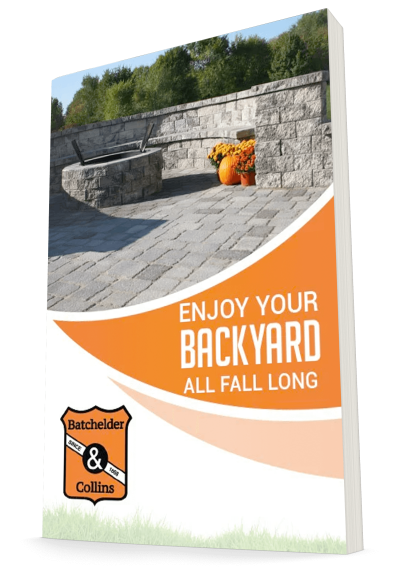
Now is the perfect time to take advantage of autumn’s mild days to prepare your backyard for the cold months ahead. But who’s to say you can’t still enjoy your backyard, spending time with your family, and cooking outdoors all fall long.
"*" indicates required fields
